11 Perennial Flowers That Bloom All Summer Long

This post follows our research editorial guidelines.

Who doesn’t love the ambiance perennial plants provide? Besides keeping the outdoors vibrant, these plants can save you the hassle of replanting each spring while providing full bloom periods in the summer, spring, and fall. However, most perennial plants only bloom for a short period.
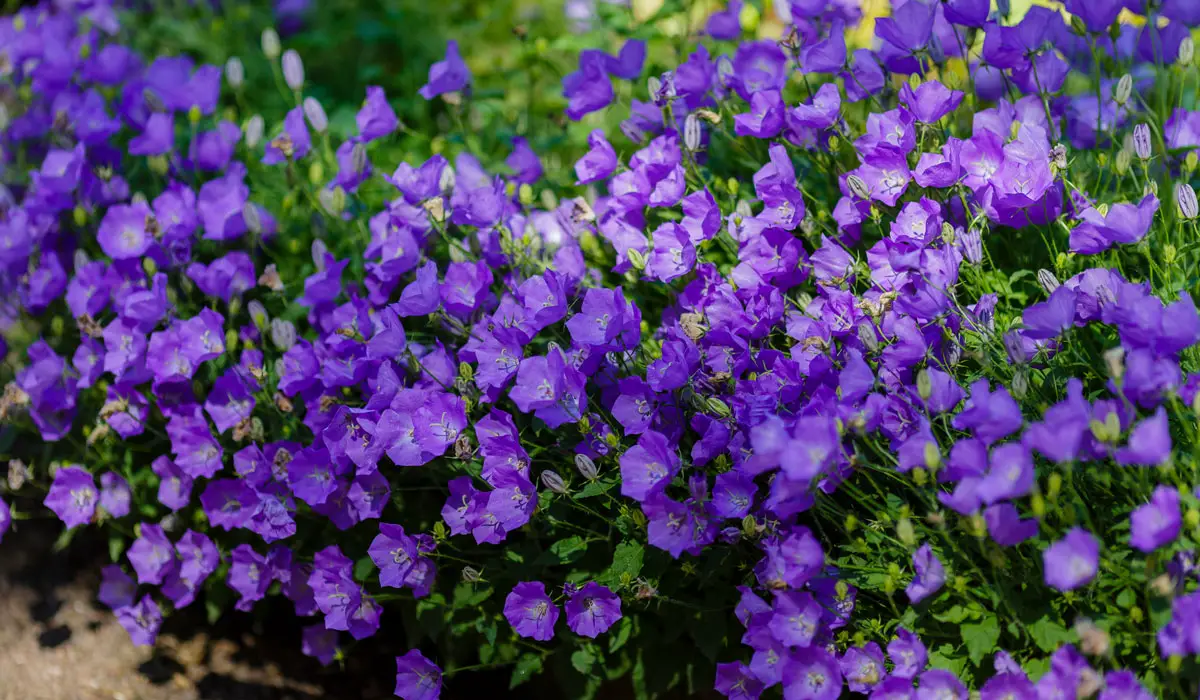
Fortunately, several perennial plant species with longer bloom periods can start blooming in spring, stay in full bloom throughout summer until fall, and naturally repeat the cycle next year.
Here’s a comprehensive list of the top 11 perennial flowering plants you can plant in your flower garden to make it low maintenance and bloom throughout the summer.
“Flowers always make people better, happier, and more helpful; they are sunshine, food, and medicine for the soul.”
Luther Burbank.

Quickly find Flowers That Bloom All Summer:
1. Blanket Flower (Gaillardia pulchella)
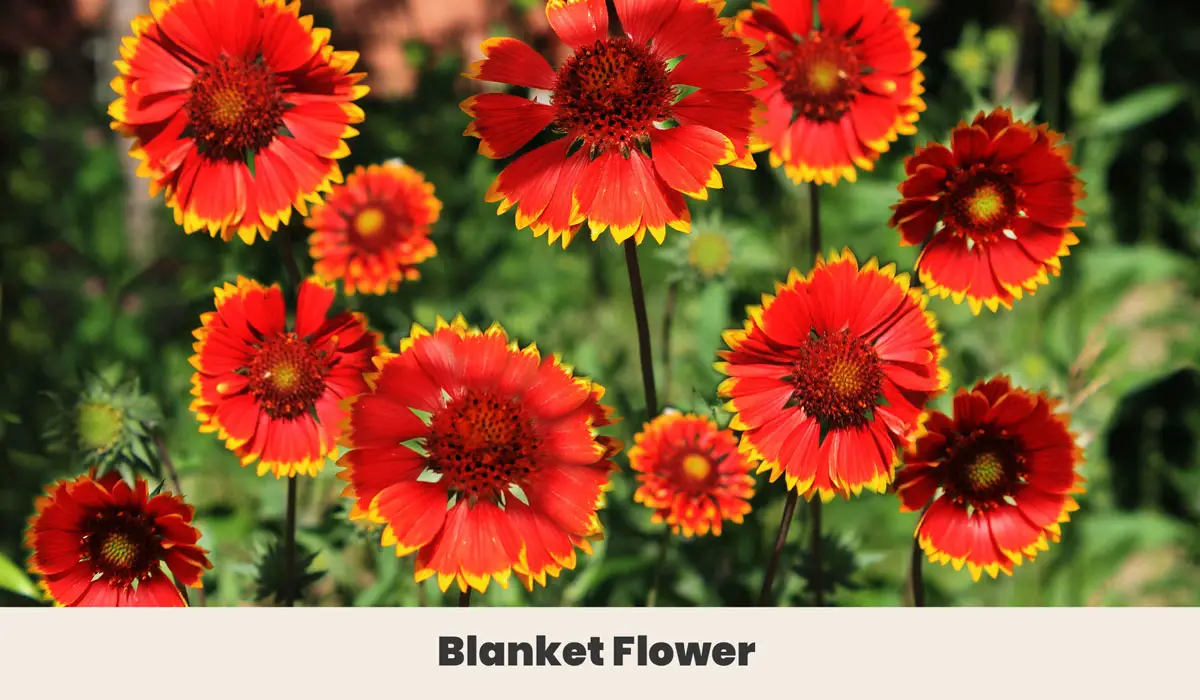
The blanket flower is a brightly-colored perennial flowering plant producing flowers in shades ranging from yellow, bronze, orange, and red. The vibrant colors create a soothing sense of excitement and serenity in your garden.
Plant Pairing Expert Tip ❤️
Blanket Flowers have such a strong and vibrant appearance in your garden. This can make companion planting a bit tricky. Try complementing the bold petals of the blanket flower with drought-tolerant grasses like Blue Fescue or Purple Fountain Grass. [1]
The plant is also drought-resistant and low-maintenance, making it a perfect choice for a hassle-free garden.
| Botanical Name: | Gaillardia pulchella |
| Growth Rate: | Fast |
| Native Range: | North and Western USA |
| Hardiness Zones: | 3-9 |
| Soil Needs: | Loamy, sandy, well-drained soil |
| Blooming Period: | June to late October |
2. Shasta Daisy (Leucanthemum × superbum)

It’s a cheerful perennial flowering plant that pairs beautifully with other plants like coneflowers, black-eyed Susans, and salvia.
Typically, the plant has been used as a filler in container gardens or used as a border. The flowers are large and are white or yellow. They’re known for their delicate petals that are often mimicked by other flowers that look like daisies.
| Botanical Name: | Leucanthemum × superbum |
| Growth Rate: | Fast |
| Native Range: | Asia and some parts of Europe |
| Hardiness Zones: | 5-9 |
| Soil Needs: | Loamy, well-drained, and moist soil |
| Blooming Period: | June-September |
3. Hardy Geranium (Geranium)

Commonly referred to as cranesbills, this low-maintenance and versatile flowering plant produces vivid and delicate flowers starting in late spring with shades of blue, white, and purple.
Add these blooms to your garden for a touch of elegance or to provide ground cover and suppress unwanted growth of weeds.
| Botanical Name: | Geranium |
| Growth Rate: | Five to six feet in one season |
| Native Range: | Woodlands of Eastern North America |
| Hardiness Zones: | 4-9 |
| Soil Needs: | Well-drained and nutrient-rich soil |
| Ease of Care: | Low maintenance |
| Blooming Period: | May through to the fist frost |
4. Reblooming Daylily (Stella de Oro)
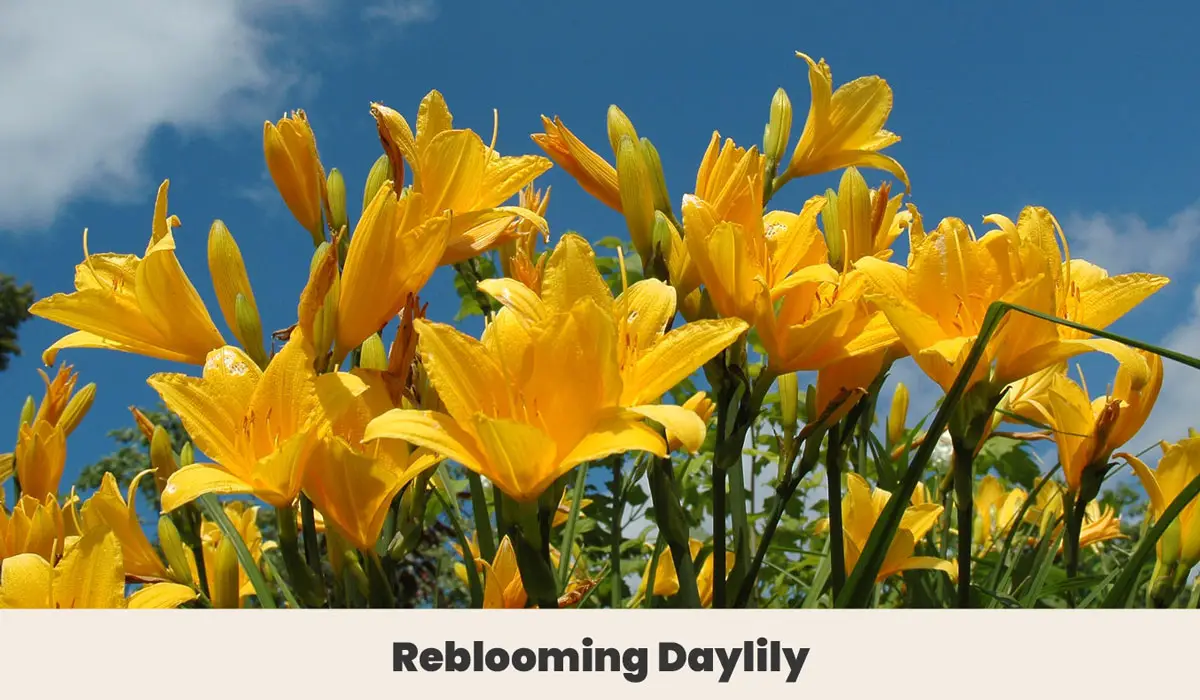
These perennial flowering plants have a long blooming season which starts in late Spring and continues throughout fall. This long blooming period is the main reason most gardeners like adding the reblooming daylily to add accent and color to their garden.
Plant Pairing Expert Tip❤️
Try pairing Reblooming Daylilys alongside Purple Salvia and Lavender. These purple plants will create a complementary display of colors that will add intrigue to your garden. All 3 of these flowers grow well in full sun with a need for well driaing soil. [2]
| Botanical Name: | Stella de Oro |
| Growth Rate: | Medium |
| Native Range: | Eurasia |
| Hardiness Zones: | 2-9 |
| Soil Needs: | Moist, well-drained, and fertile loam |
| Blooming Period: | May-August |
5. Black-eyed Susan -(Rudbeckia hirta)
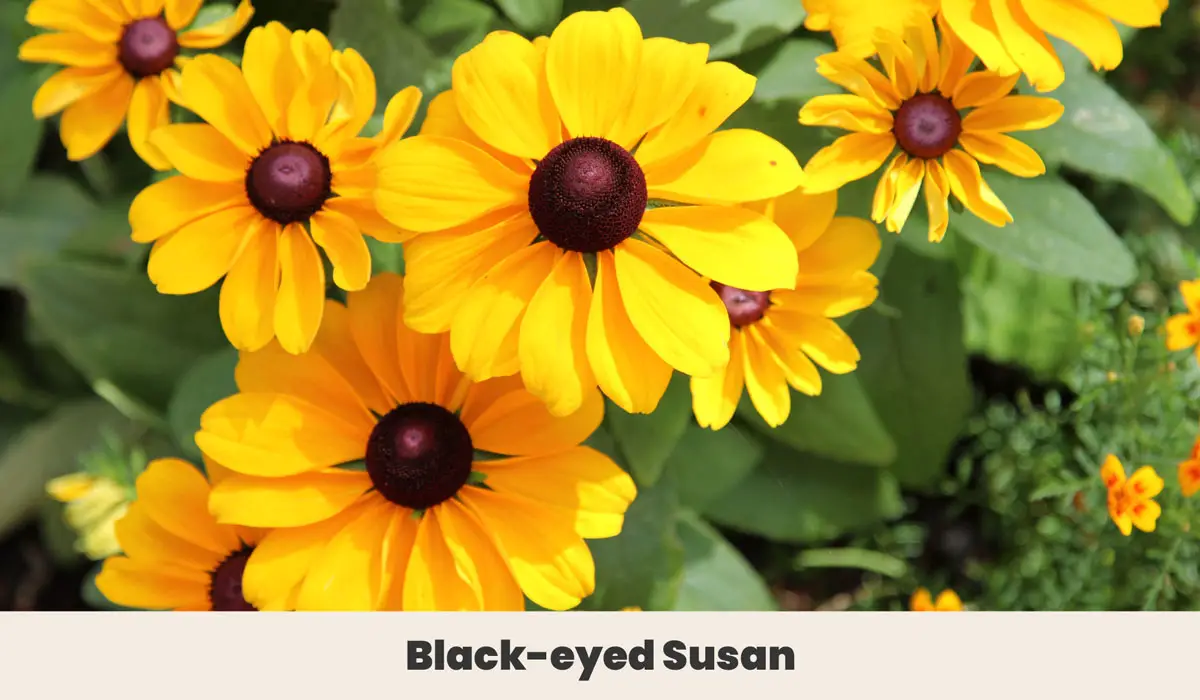
The Black-eyed Susan plant produces attractive flowers that are bright and yellow-orange in color with a distinct dark center. If you have a wildflower garden or want to add a splash of color, this plant is a feasible choice.
If you’re looking for a few flowers to grow that bloom all summer try planting Black-eyed Susan alongside shasta daisies and purple conflowers. They each require similar growing conditions and will thrive and bloom together creating a captivating experience in your garden.
| Botanical Name: | Rudbeckia hirta |
| Growth Rate: | Intermediate |
| Native Range: | Eastern and Central North America |
| Hardiness Zones: | 3-7 |
| Soil Needs: | Evenly moist and well-drained soil |
| Blooming Period: | (June to August) |
6. Pincushion Flower (Scabiosa)
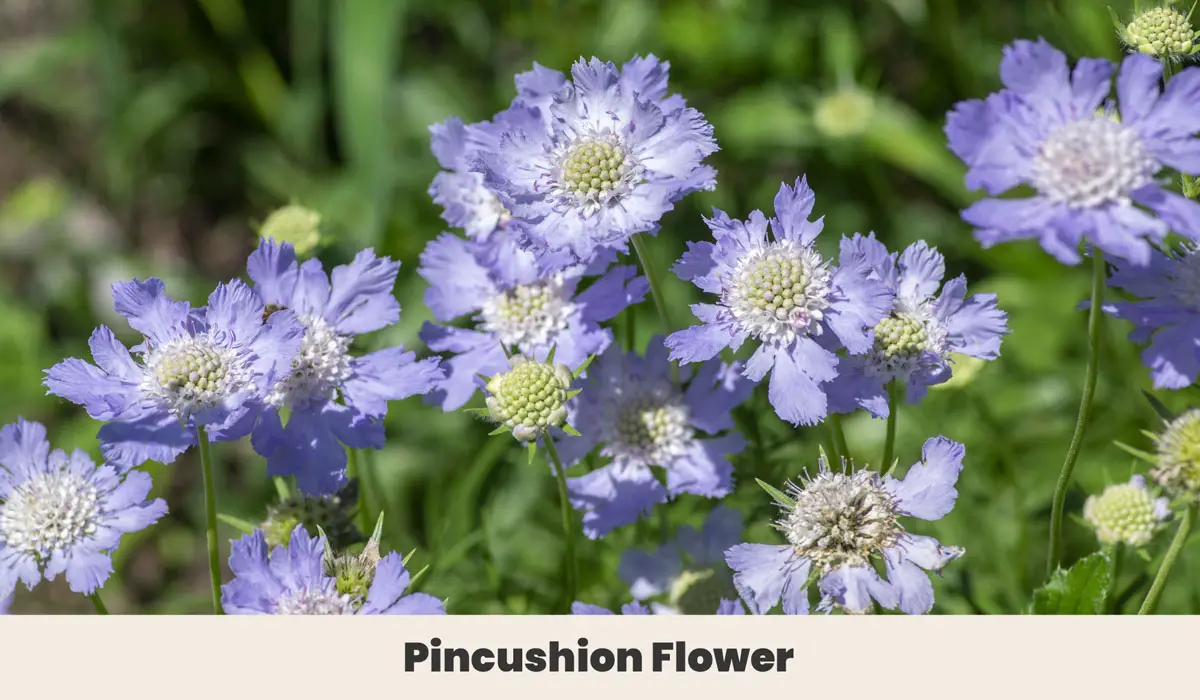
The Pincushion is a beautiful and versatile flowering plant that produces button-like lavender or blue flowers that start blooming from late spring until fall. The plant has long-lasting blooms and elevates the aesthetics of your garden space.
| Botanical Name: | Scabiosa |
| Growth Rate: | Fast |
| Native Range: | Mediterranean region, Europe, Africa, and Asia |
| Hardiness Zones: | 3-8 |
| Soil Needs: | Medium moisture and well-drained soil |
| Blooming Period: | Late April until October |
7. Perennial Salvia (Salvia officinalis)

The purple perennial salvia has showy blooms and striking foliage, making it a popular choice among gardeners. The gray-green leaves and a variety of other colors, including blue, pink, and white flowers, are perfect to add to the borders.
Besides having ornamental value, the plant is commonly used as a herb in cooking, providing an earthy, aromatic, and savory flavor.
| Botanical Name: | Salvia officinalis |
| Growth Rate: | Medium |
| Native Range: | Northern Mediterranean |
| Hardiness Zones: | 4-10 |
| Soil Needs: | Clay and loamy foam |
| Blooming Period: | June-October |
8. Bleeding Hearts (Lamprocapnos)

Besides being low-maintenance and a symbolic value depicting love and affection, this perennial has a significant ornamental value. The Bleeding Heart has already gained popularity due to its tall pink flowering hearts.
Woodland Garden Favorite 🌳
Bleeding Hearts love a good shady part of your garden. They are the ideal summer flower to grow in woodland and country gardens alongside other shade loving plants like Hostas and Ferns which will hide the the flower foliage that dies back. [3]
The flowers are heart-shaped, with a distinct droplet shape at the bottom. It’s great for adding visual interest or texture to the garden space.
| Botanical Name: | Lamprocapnos |
| Growth Rate: | Moderate |
| Native Range: | Korea, China, Serbia, and Japan |
| Hardiness Zones: | 3-9 |
| Soil Needs: | Alkaline or neutral nutrient-rich soil with adequate moisture |
| Blooming Period: | April-September when grown in cool regions |
9. Garden Phlox (Phlox paniculata)
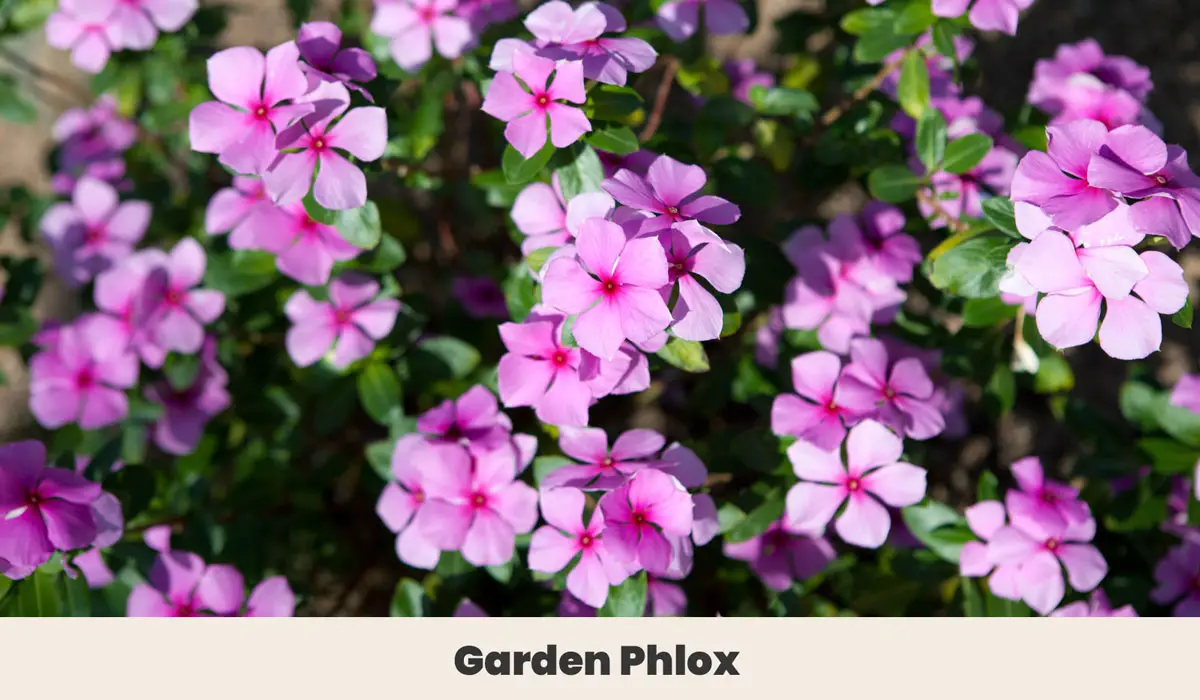
The perennial plant produces magnificent and fragrant flowers ranging in colors, including pink, red, lavender, and white. Add texture to your flower beds using the Garden Phlox and mix with other flowering plants for a visually appealing landscape.
Garden Phlox flowers have such a sweet floral smell that is strongest in the early morning and evening. If you have a sitting area where you often wind down for the day try planting these Garden Phlox for an aromatic experience to end your day with.
| Botanical Name: | Phlox paniculata |
| Growth Rate: | Slow |
| Native Range: | Northeastern and Central U.S. |
| Hardiness Zones: | 3-8 |
| Soil Needs: | Humus-rich soil with adequate drainage |
| Blooming Period: | July-September |
10. Pink Hollyhocks (Alcea rosea)

Although the plant is short-lived it will regenerate its flowers once pruned to provide lasting blooms into fall. It’s an all-time favorite pick and can be mostly seen in older home gardens. While the hollyhock plant is available in several colors, the pink hollyhock creates a mesmerizing ambiance as the plant stands tall and striking in your garden.
If you want to add height, color, and texture to flower beds and borders, pink hollyhocks are an excellent choice for any garden.
| Botanical Name: | Alcea rosea |
| Growth Rate: | Slow |
| Native Range: | Europe and Asia |
| Hardiness Zones: | 3-8 |
| Soil Needs: | Good draining soil with neutral pH |
| Blooming Period: | July-September |
11. Dalmatian Bellflowers (Campanula portenschlagiana)

Often used as edging plants around borders to fill gaps between your garden’s stepping stones and over stone retaining walls, these mesmerizing flowering perennials have dark green and rounded leaves.
The flowers resemble a cup or a bell and are available in shades of blue or purple. These Dalmatian Bellflowers are ideal for rock gardens, over walls, raised beds, and wall crevices.
| Botanical Name: | Campanula portenschlagiana |
| Growth Rate: | Fast-growing |
| Native Range: | Dalmatian mountains Croatia |
| Hardiness Zones: | 3-9 |
| Soil Needs: | Well-drained soil |
| Blooming Period: | June-October |
Final Thoughts
These were my picks for the perennial flowering plants you can plant in your garden space for a bloomy summer. Being perennials, they won’t require replanting in the spring season, as most of the plants I mentioned can self-propagate when feasible conditions are provided.
We hope the information presented here aids you in picking the right flowering plants and making your garden a place of pure serenity and bliss.
References:
[1] University of Wisconsin-Madison Extension. “Blanket Flower (Gaillardia spp.).” UW Horticulture, Division of Extension, University of Wisconsin-Madison. Accessed November 14, 2023. https://hort.extension.wisc.edu/articles/blanket-flower-gaillardia-spp/
[2] Mississippi State University Extension. “Yellow Flowers Bring Happiness to Gardens.” Southern Gardening, Mississippi State University Extension. Accessed November 14, 2023. http://extension.msstate.edu/news/southern-gardening/2007/yellow-flowers-bring-happiness-gardens
[3] University of Wisconsin-Madison Extension. “Bleeding Heart (Dicentra spectabilis).” UW Horticulture, Division of Extension, University of Wisconsin-Madison. Accessed November 14, 2023. https://hort.extension.wisc.edu/articles/bleeding-heart-dicentra-spectabilis/

Before you go!
Jaw-Dropping Spring Gardens: Secrets to Pairing Bulbs That Every Gardener Must Know
The Diverse World Of Dahlias: Explore these Cultivars for spring
8 World Famous Wildflower Gardens You Must See in 2024
12 Tall Perennials With The Best Pink Flowers in Bloom